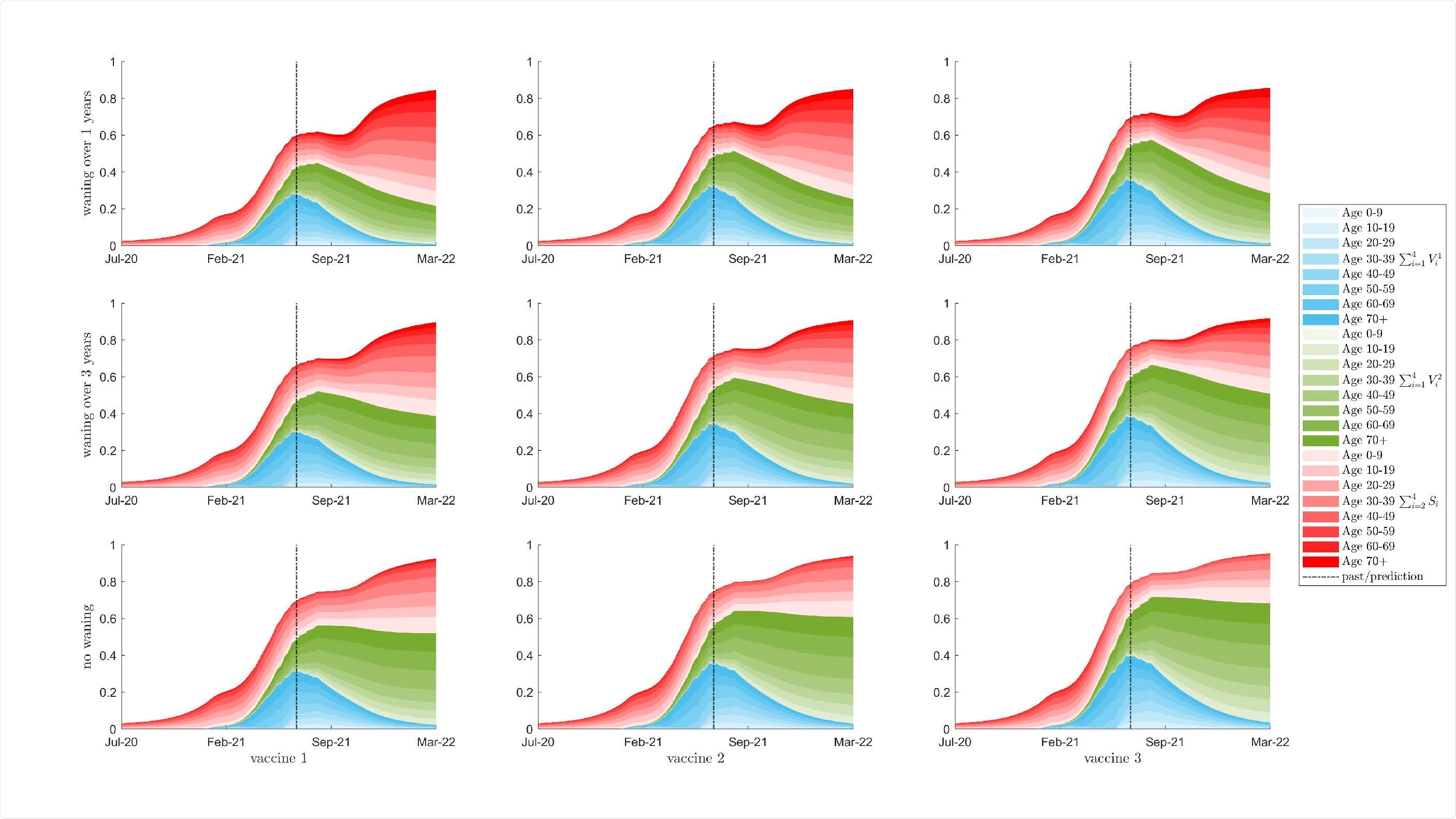Despite increased vaccine distribution and a significant decrease in the number of COVID-19 cases in Canada, the future of the pandemic is still a major concern, based on the possibility of a resurgence in the short term as well as long term and an understanding of the future of severe acute respiratory syndrome coronavirus 2 (SARS-CoV-2) immunity. It is not clear if the Canadian population will reach herd immunity or if there is a risk of future resurgence of the virus in the Fall or Winter.
A crucial step that will help answer these questions is the determination and quantification of immunity against SARS-CoV-2 in the population. Seroprevalence studies can inform immunity distribution calculations.

Determining COVID-19 immunity in the Canadian population due to infection and vaccination
A recent study posted to the medRxiv* preprint server by the COVID-19 Immunity Task Force (CITF) analyzing various seroprevalence studies determined the Canadian population’s COVID-19 immunity as of May 31, 2021, as follows: 5.4% due to infection and 44.9% due to infection and vaccination.
“The CITF is the only working group that we know of that has attempted to quantify seroprevalence in the Canadian population.”
In this study, researchers used a mathematical model to determine immunity distributions by age, from infection, and from vaccination in the Canadian population. The model uses daily COVID-19 incidence data up to June 27, 2021, and incorporates actual coverage up to June 27, 2021, and projected coverage up to September 2021 of the first and second COVID-19 vaccine doses. The model was then used to quantify immunity distributions from January 2020 to March 2022, based on various assumed characteristics of the COVID-19 vaccines, such as protection from infection and protection from severe disease against different variants of concern and varying rates of waning immunity.

Results show that most Canadians will not have sufficient COVID-19 immunity to prevent a Fall resurgence
The study estimated that coinciding with the end of the vaccination program, by late Summer 2021, 60 − 80% of the Canadian population will gain some immunity to COVID-19. However, the findings from the model show that this level of immunity is not enough to prevent a Fall 2021 resurgence. Furthermore, the timing and severity of a COVID-19 resurgence may vary in magnitude due to multiple factors, including the rate of waning immunity, relaxation of non-pharmaceutical interventions like social distancing, the transmissibility of SARS-CoV-2 variants of concern, and the level of protection offered by vaccines against SARS-CoV-2 infection and severity of disease.
“Our model predicts that 60 to 80% of the Canadian population will have some immunity to SARS-CoV-2 by the end of the vaccination campaign in late Summer 2021.”
Booster vaccinations and/or public health measures needed to prevent major COVID-19 resurgence in Canada
Experts think that there is a threat of COVID-19 resurgence in Canada in Fall 2021. To better understand the possibility and severity of this threat, researchers quantified the level of protection in the population using an age-structured model that includes infection, vaccination, and waning immunity, which helps estimate the COVID-19 immunity distribution in the Canadian population.
To summarize the findings, the researchers found that the magnitude of COVID-19 resurgence in Fall 2021 – Winter 2022 is dependent on the relaxation of non-pharmaceutical interventions and social distancing measures, rate of waning immunity, the transmissibility of the virus, and the effectiveness of the vaccines against infection and disease. In order to prevent a large-scale resurgence in Canada, booster vaccination and/or re-introduction of public health measures may be needed.
“As immunity is lost, a vaccine booster campaign or the re-introduction of public health mitigation will be required.”
*Important Notice
medRxiv publishes preliminary scientific reports that are not peer-reviewed and, therefore, should not be regarded as conclusive, guide clinical practice/health-related behavior, or treated as established information.
- Fall 2021 Resurgence and COVID-19 Seroprevalence in Canada Modelling waning and boosting COVID-19 immunity in Canada A Canadian Immunization Research Network Study, David W. Dick, Lauren Childs, Zhilan Feng, Jing Li, Gergely Röst, David L Buckeridge, Nick H Ogden, Jane M Heffernan, medRxiv, 2021.08.17.21262188; doi: https://doi.org/10.1101/2021.08.17.21262188, https://www.medrxiv.org/content/10.1101/2021.08.17.21262188v1
Posted in: Child Health News | Men's Health News | Medical Research News | Women's Health News | Disease/Infection News
Tags: Coronavirus, Coronavirus Disease COVID-19, immunity, Immunization, Pandemic, Public Health, Research, Respiratory, SARS, SARS-CoV-2, Severe Acute Respiratory, Severe Acute Respiratory Syndrome, Syndrome, Vaccine, Virus

Written by
Susha Cheriyedath
Susha has a Bachelor of Science (B.Sc.) degree in Chemistry and Master of Science (M.Sc) degree in Biochemistry from the University of Calicut, India. She always had a keen interest in medical and health science. As part of her masters degree, she specialized in Biochemistry, with an emphasis on Microbiology, Physiology, Biotechnology, and Nutrition. In her spare time, she loves to cook up a storm in the kitchen with her super-messy baking experiments.
Source: Read Full Article
